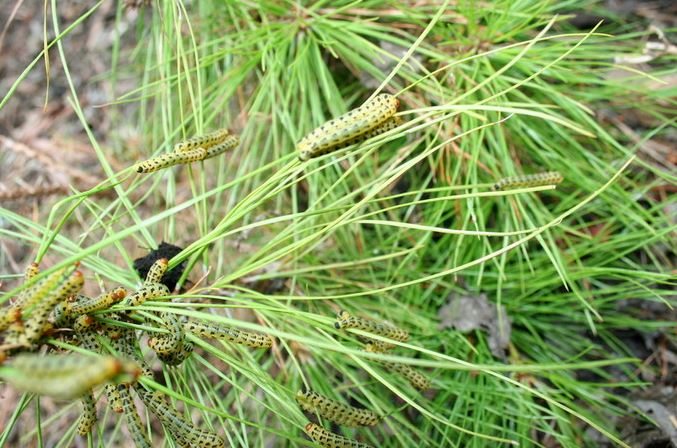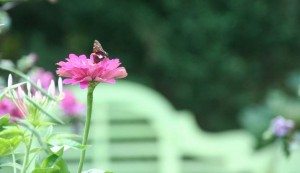From Houzz.com
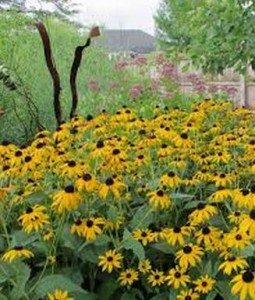 August air is thick. Walking through the garden in the early morning is like stepping into a sauna. While morning is the coolest part of the day, it’s still sultry. August gardening in the Southeast is not for the faint at heart. Some even give up and pray that September comes early.
August air is thick. Walking through the garden in the early morning is like stepping into a sauna. While morning is the coolest part of the day, it’s still sultry. August gardening in the Southeast is not for the faint at heart. Some even give up and pray that September comes early.
Effectively, gardening during August requires a schedule change, unless you relish punishment. I happen to tolerate an August garden because the wildlife keeps me interested, but admittedly, the anticipation of the meteorological fall, which often happens towards the end of the month, is one of my favorite times in the gardening season. I press on in August and enjoy the South in all its sultry glory.
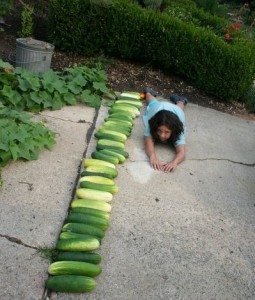 Harvest vegetable gardens as needed. Most of what you have growing in your vegetable garden are annuals. By August, they are looking a little wrung out. As plants end their production cycle, remove them from the garden; otherwise, they may attract insects and disease to the plants that are still productive.
Harvest vegetable gardens as needed. Most of what you have growing in your vegetable garden are annuals. By August, they are looking a little wrung out. As plants end their production cycle, remove them from the garden; otherwise, they may attract insects and disease to the plants that are still productive.
Deadhead flowers. Keep your flowers blooming longer by removing faded blossoms from your cannas,roses, daisies and more.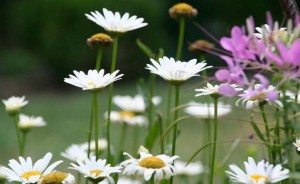
Fertilizer dos and don’ts. As August arrives, some plants will benefit from an application of fertilizer. For other plants, it could do more harm than good.
Do fertilize:
- Summer veggies such as tomatoes, peppers and eggplant continue to produce when fertilized regularly. Use a product that contains 5 percent nitrogen.
- Fall vegetable crops
- Fall-blooming perennial and annual flowers
- Chrysanthemums and dahlias
- Cannas
- Reblooming iris would benefit from a light application
- Warm season lawns (Bermuda and Zoysia) can be fertilized
Remember to water any application of fertilizer well into the soil to provide nutrients for the roots of the plants.
Don’t fertilize:
- Azaleas and camellias, because the fertilizer will disturb bud formation.
- Summer-flowering shrubs shouldn’t need fertilizing for the same reason.
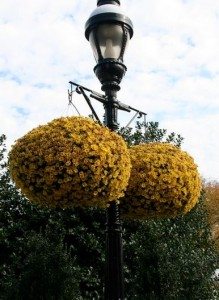 Water your container plants well. From hanging baskets to veggies on the deck, most of us have some kind of container planting. August can be hot, so be sure to keep your container plantings well hydrated.
Water your container plants well. From hanging baskets to veggies on the deck, most of us have some kind of container planting. August can be hot, so be sure to keep your container plantings well hydrated.
Propagate roses. Roses can be propagated by layering as late as mid-August. Long, flexible canes are the easiest to propagate because they are easiest to bend into place. Use a clean knife to remove two thorns near the top of the stem and bend it toward the ground. Make a couple of small cuts into the bark between where the thorns were. This is called “wounding the cane.” Hold the wounded area in good contact with the soil with landscape pins and cover with soil, leaving the growing tip of the stem uncovered. It’s also a good idea to put a brick or stone over the covered and wounded cane to give it extra hold.
Next spring, you should see new growth emerge. Once you see new leaves on the rooted stem, carefully remove the entire stem from the parent plant, and recut the stem just beneath the new root mass. Now you are ready to plant your new rose bush.
Pests. See these on your pines? They’re the Pine Sawfly larvae. Pick them off and drop them in a bucket of soapy water.
Bulbs. Select and preorder your spring-blooming bulbs now while supplies are plentiful. Don’t put off today what will be gone tomorrow. The most unusual bulbs sell out fast. I can say this now because I’ve already put in my order. Try something fun such as the species tulip Tulipa clusiana.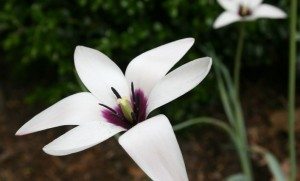
Cut flowers. Remember those zinnias you seeded in July? Seed more in August, and be sure to cut some to enjoy inside!

 Menu
Menu Search
Search


